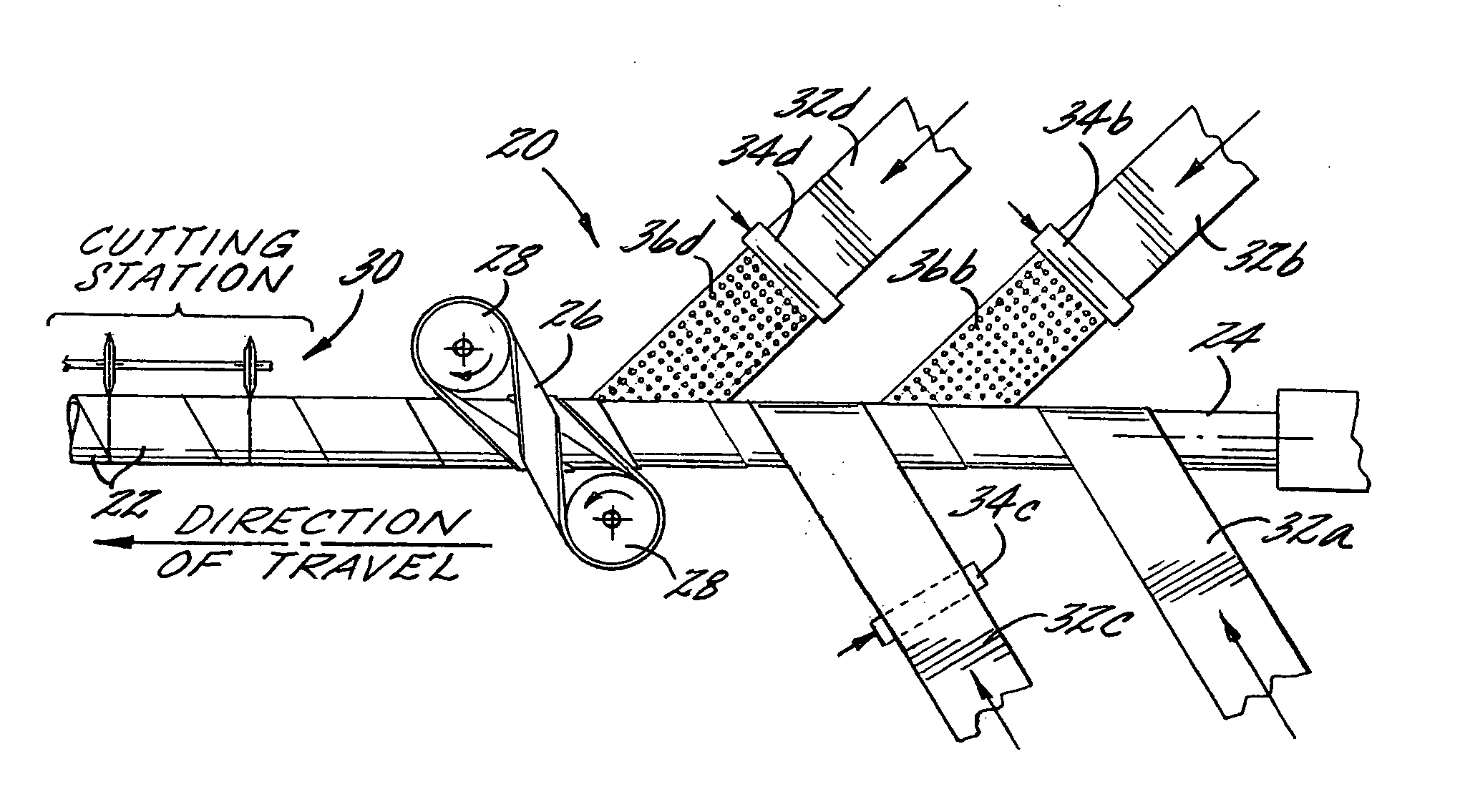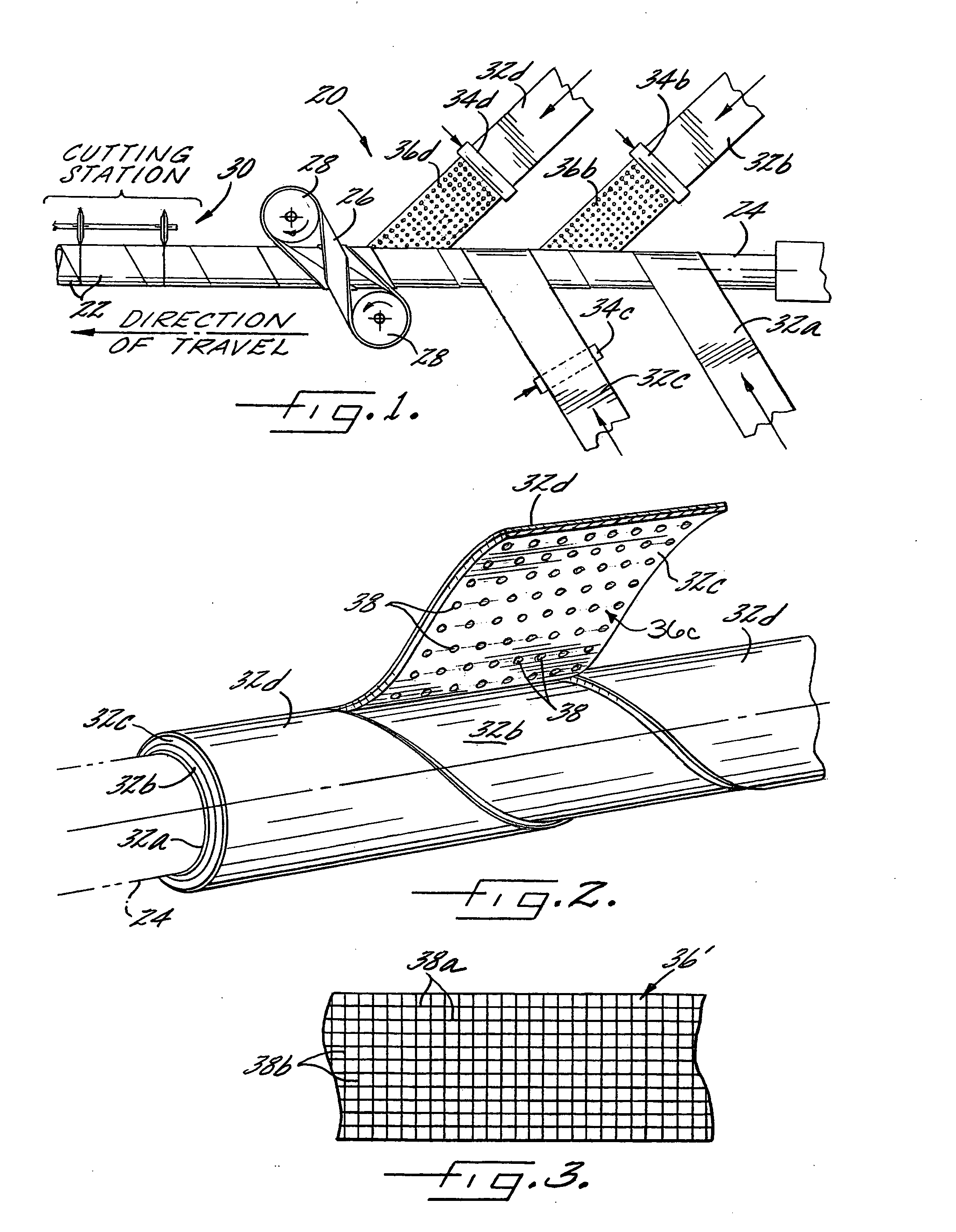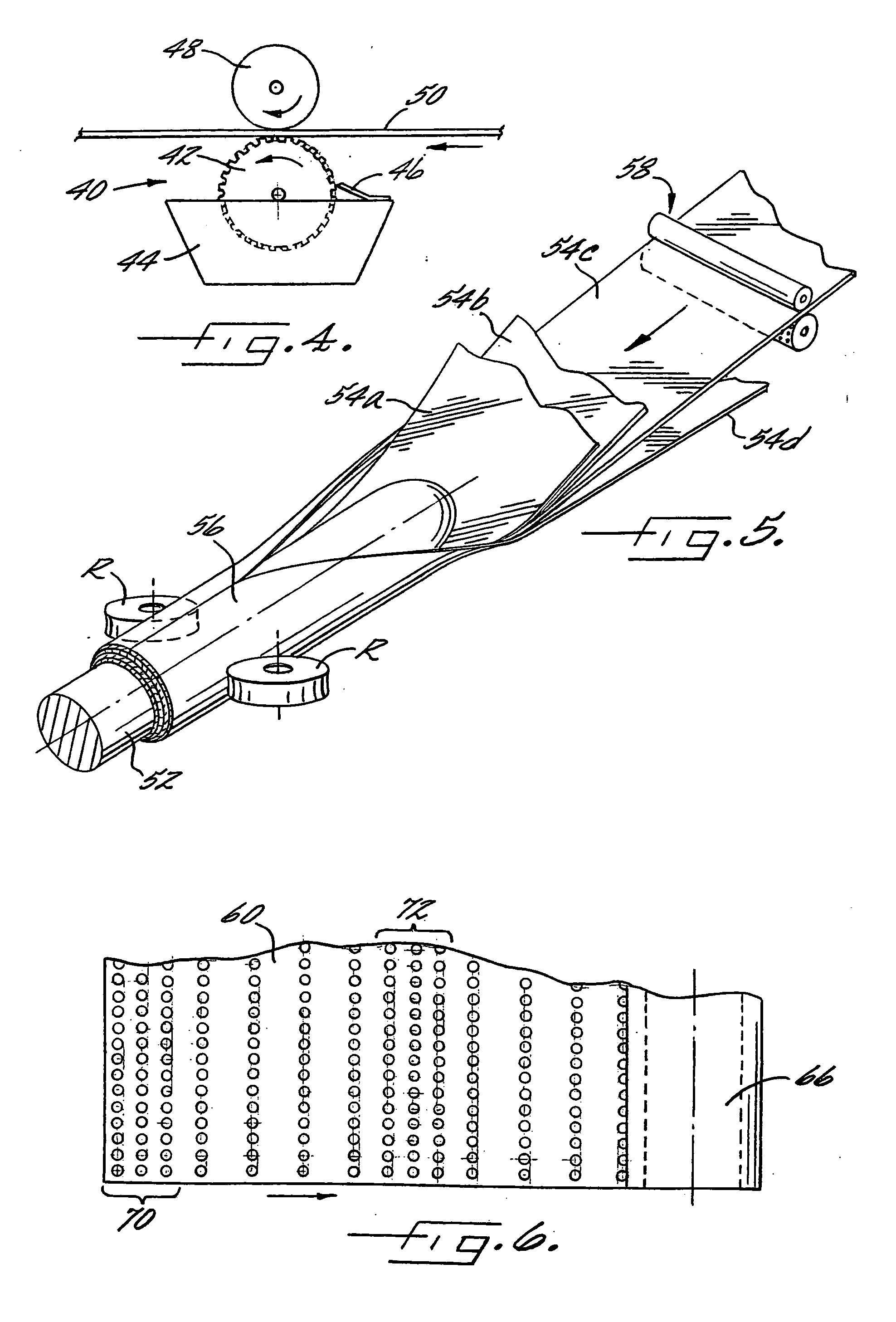Wound tubes with partially adhered structural layers, and methods for making same
a technology of structural layers and wound tubes, applied in the field of tubes, can solve the problems of paperboard exhibiting paperboard tending to exhibit a hysteresis effect with respect to its moisture content, and undesirable moisture add-ons, and achieve the effect of not substantially compromising the strength of key paperboard tubes
- Summary
- Abstract
- Description
- Claims
- Application Information
AI Technical Summary
Benefits of technology
Problems solved by technology
Method used
Image
Examples
Embodiment Construction
[0019] The present inventions now will be described more fully hereinafter with reference to the accompanying drawings, in which some but not all embodiments of the inventions are shown. Indeed, these inventions may be embodied in many different forms and should not be construed as limited to the embodiments set forth herein; rather, these embodiments are provided so that this disclosure will satisfy applicable legal requirements. Like numbers refer to like elements throughout.
[0020] With reference to FIG. 1, an apparatus 20 and a process for making wound tubes in accordance with one embodiment of the invention are illustrated. The apparatus 20 is a spiral winding apparatus for making spirally or helically wound tubes 22, one of which is depicted in greater detail in FIG. 2. The apparatus and process of FIG. 1 illustrate the manufacture of a 4-ply tube, but the principles pertaining to the 4-ply tube are equally applicable to tubes having any number of plies. The apparatus includes...
PUM
| Property | Measurement | Unit |
|---|---|---|
| radial thickness | aaaaa | aaaaa |
| thicknesses | aaaaa | aaaaa |
| thicknesses | aaaaa | aaaaa |
Abstract
Description
Claims
Application Information
 Login to View More
Login to View More - R&D
- Intellectual Property
- Life Sciences
- Materials
- Tech Scout
- Unparalleled Data Quality
- Higher Quality Content
- 60% Fewer Hallucinations
Browse by: Latest US Patents, China's latest patents, Technical Efficacy Thesaurus, Application Domain, Technology Topic, Popular Technical Reports.
© 2025 PatSnap. All rights reserved.Legal|Privacy policy|Modern Slavery Act Transparency Statement|Sitemap|About US| Contact US: help@patsnap.com



